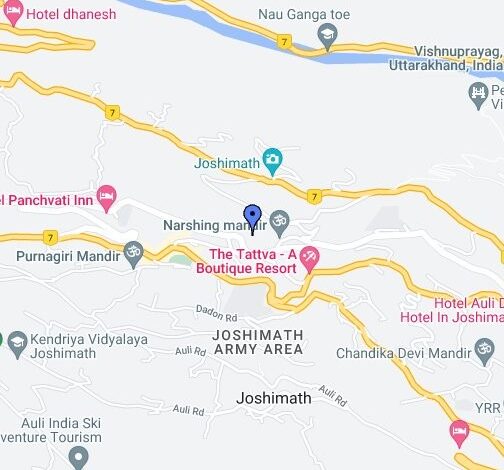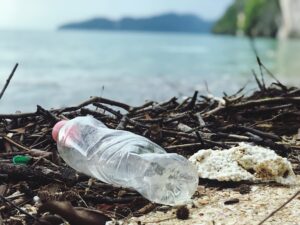JOSHIMATH INCIDENT SIGNALS, LETS WAKE UP, NOW!
THE REVERED MILESTONE TOWN OF SANATAN CIVILIZATION IS SINKING. WE CAN'T ESCAPE THE BLAME FOR HAVING OVERLOOKED WHAT OUR ANCESTORS TAUGHT US. SUSTAINABILITY. ! A QUICK RECAP ON - WHERE ARE WE GOING WRONG?

THE JOSHIMATH INCIDENT IS A WARNING SIGNAL. HAPPENINGS IN JOSHIMATH MUST NOT BE SEEN IN ISOLATION. THESE AREN’T TAKING PLACE FOR THE FIRST TIME AND CERTAINLY ARE NOT THE LAST. OUR MUCH EXPECTED RESPONSE TO THE CAUSE OF SUSTAINABLE DEVELOPMENT HAS BEEN LONG LONG OVERDUE, REMINDS DHANANJAY DESHMUKH.
The headlines that have been making ripples for the past week are echoing the same point, “Joshimath is sinking.” One of the four “Maths” or religious spiritual establishments, that the Adi Shankaracharya founded in the eighth century was in Joshimath. One may also see the revered Kalpavriksha, which is thought to be 1200 years old, right here in Joshimath. Numerous temples, including those for Narsimha and Gaurishankar, are here across the city, that regularly receive a large number of visitors.
Apart from religious and spiritual significance, the sleepy town in Chamoli district of Uttarakhand is “made famous” by some greedy people by promoting it as the starting point for mountain climbing adventures, trekking, and a number of other exhilarating pursuits for people seeking an adventurous lifestyle.
Joshimath was constructed on a slope covered in landslide deposits. The deposits may have become more stable through the passage of time, but the slopes have been damaged by indiscriminate construction activities and projects like highways and dams that involve the use of explosives, drilling, and extensive digging.
THE JOSHIMATH INCIDENT

The issue of land subsidence also existed decades ago. The MC Mishra Committee was established (in 1973) to investigate the causes of it. The Mishra Committee had issued a warning against excavating the slopes and removing the boulders by explosives and digging. Did we pay heed? No. We are paying the price for it. Today we are witnessing this scenic story take horrendous turns.
This is an apt use case of over indulgence of mankind on the earth’s resources. Our goal for arresting such instances should be to Protect, repair, and encourage the sustainable use of terrestrial ecosystems. Manage our forests sustainably. Fight desertification. Halt and reverse land deterioration.
Over usage of electronics and plastic is building newer waste mountains every minute – across the globe! Rampant and insane construction is adding debris to that. The massive structures (in new and redevelopment projects) that we are building use Cement. While building new ones, we are destroying older structures and junking the debris in places wherever possible. Despite being made from rock and dirt, cement cannot decompose. This is due to the materials’ extraction methods and their subsequent mixing, both of which have a negative impact on the environment.
LET’S WAKE UP, FIND SUSTAINABILITY !
Sustainability is the ability to be maintained at a certain rate or level.
The core sustainability of economic growth lies in the avoidance of the depletion of natural resources in order to maintain an ecological balance.
Future of our businesses, Industries, economies, and generations will depend on our desire to recognize the importance of sustainable development. Development that takes cognizant view of damage its processes can cause to mankind and nature alike. Erosion of environmental values leads to damage to nature. Nature encompasses five key elements, earth, water, air, fire, and space. Of these – water, earth and air are impacted heavily by human interventions.
In order to minimize the damage we need to understand the factors that cause the damage, internalize them and then take corrective measures – in a sustainable manner, meaning regularly.
TRUE BLUE
Earth’s 70% area is occupied by water, in the form of ponds, currents, lakes, rivers and seas. All these are home to aquaculture and vegetation. We must conserve and utilize them sustainably (meaning sensibly) for our economic development.
According to the World Bank, “the sustainable use of ocean resources for economic growth, improved livelihoods, and jobs while safeguarding the health of the ocean ecosystem” is what is meant by the blue economy. The “blue economy” can boost economic growth, create jobs, mitigate the consequences of climate change, and help feed a burgeoning global population. A few months ago, a rough policy framework for India’s “Blue Economy” was developed.
Remember, Marine life is Vibrant yet very sensitive. Over indulgence of mankind in interacting with it, or utilizing it for monetary benefits must be curtailed. At the same time one can imaginatively conserve and naturalize their progressions. Here is how.
HILSA FISH & FARAKKA BARRAGE

Hilsa fish is quite famous for its incredibly soft meat. It is found in the freshwaters in eastern India. The Hilsa is referred to as an anadromous fish in scientific terminology. That is, most of its life is spent in the ocean. However, during the rainy season, when it is time to spawn, the Hilsa moves toward the estuary, where the rivers of Bangladesh and India meet the Bay of Bengal. Some of the shoals are known to move toward the Godavari, and there are records of Hilsa migration to the Cauvery. The majority of the shoals travel upstream in the Padma and Ganga.
Historical records also show, that until the 1970s, the Hilsa would swim the Ganga upstream to Allahabad and even to Agra. But the Farakka Barrage, which became operational on the Ganga in 1975, disrupted the westward movement of the Hilsa. The barrage had a navigation lock that stopped the fish from swimming upstream beyond Farakka.
In order to create a “fish pass” for the Hilsa, the government, through a decision in 2019, redesigned and implemented a navigation lock at the Farakka Barrage at a cost of Rs 360 crore. The new navigation lock would enable modern electro-hydraulic and remotely controlled operation of all gates of the barrage from a control room. The new lock is also expected to save Bihar and West Bengal from flooding and generate hydropower as part of the Jal Marg Vikas Pariyojana, which includes multimodal terminals, strengthening river navigation system and conservation works.
TOWARDS SUSTAINABILITY
Such and many more initiatives can help us to Conserve and sustainably use the oceans, seas, and marine resources for sustainable development. Our efforts should be aimed to:
-
Reduce marine pollution
-
Protect and conserve marine ecosystem (like the Hilsa case)
-
End overfishing
-
Conserve coastal and marine areas – by curtailing over constructions
-
Incentivize efforts (individual or institutional) that propagate the sustainable use of marine resources, including through sustainable management of fisheries, aquaculture, and tourists
-
Encourage the exchange of best practices
POLLUTION IS KILLING !

After vehicular pollution, construction is a major contributor to air pollution. An estimated 1.2 lakh deaths (life cost running into billions) occur due to air pollution in India every year – New Delhi being the highest followed by Mumbai, Bengaluru, Hyderabad, Chennai, and Lucknow.
We need initiatives that can help us to:
-
Respect biodiversity and develop ecosystems to conserve and thrive – through “project tiger” India showed to the world that concerted efforts can help. Recently Government of India imported 8 cheetahs from South Africa to encourage rehabilitation in India (which was once the capital of cheetahs)
-
Arrest deforestation and insane construction in the garb of eco-tourism (remember how the Jain community fought hard to de-recognize the ‘eco-tourism spot’ tag that was given to their most revered and spiritual place).
-
Respect mountains (Joshimath is a warning signal, many more places in the hilly areas could be next)
-
Reclaim deserted areas – from 1979 Jaydev Prayag planted a sapling every day in the sandy soil of Majuli Island Assam. This admirable deed resulted in the beautiful 550-hectare Moloi Forest. The island, which is covered in a wide variety of trees, has thrived, and drawn a wide range of creatures, including elephants, rhinos, deer, wild boars, vultures, reptiles, and even Royal Bengal tigers. The trees that initially appeared on the island were bamboo trees, followed by cotton.
-
Incentivize design, creation, and usage of sustainable materials (for electronic and consumer goods).
-
Encourage sustainability as a core in manufacturing.
What connects us all is the Earth. We Indians believe in “Vasudhaiva Kutumbakam”, which means “The World Is One Family.” Remember, we have one finite lifetime and our mother earth too has finite resources. Let’s work with infinite energy to sustain it longer, for our millions of generations! Let there be no landslides or sinking towns. Let there be no pollution. Lets Sustain, Lets LIVE!

Dhananjay M. Deshmukh is a Mumbai based independent market research and business consulting professional. Views are personal.
Data and information presented is collected via online secondary research




